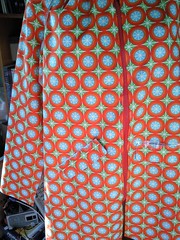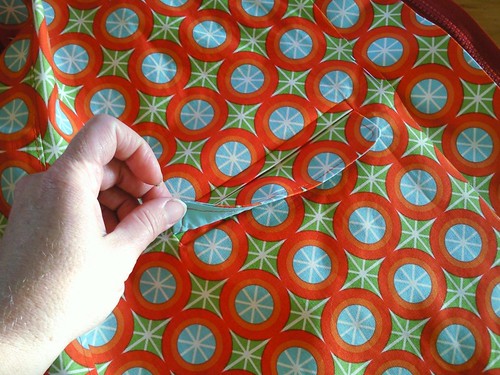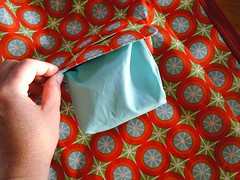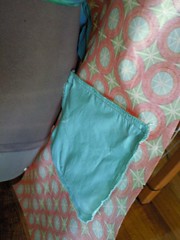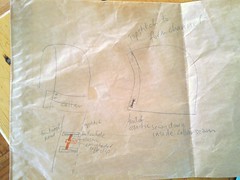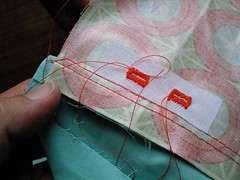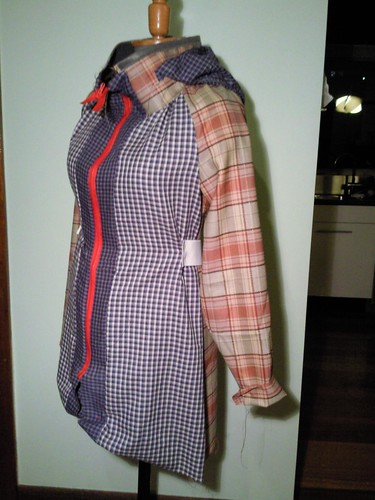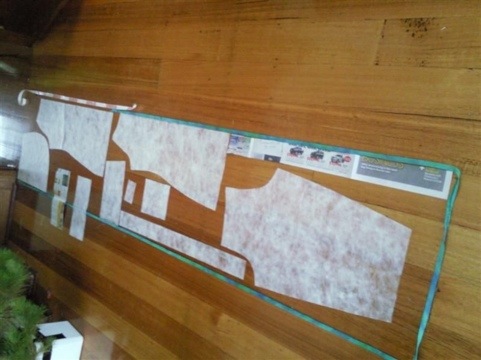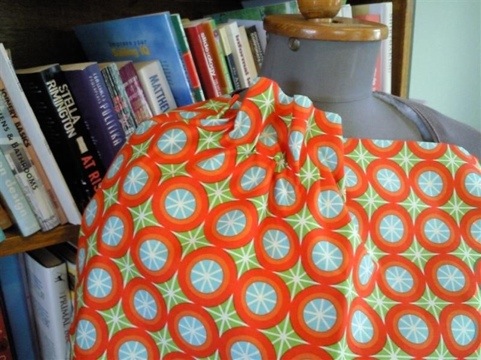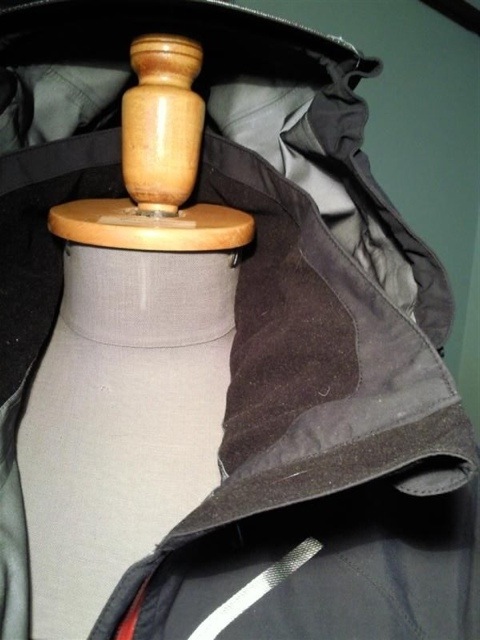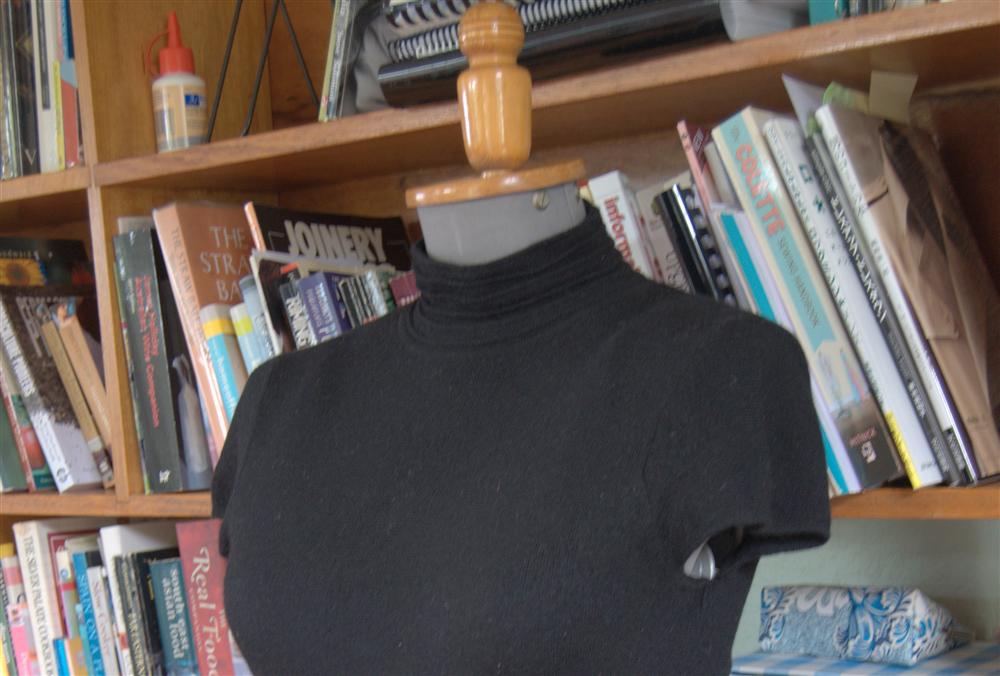I added a welt pocket with a flap to the front of my Minoru Jacket. I figured if I am making A-line skirts and dresses with added pockets, I definitely needed external pockets on my jacket. Pockets I think are essential in a jacket. Yesterday I put welt pockets with flaps into my jacket front before I sewed the side and sleeve seams. I wanted to have pockets that would not interfere with the side seams and still be fairly water-resistant.
Originally I had planned an angled pocket as that is more comfortable for putting my hands in and leaving them there. But it just looked funny with the patterned fabric. I made the flaps and stuck them on with sticky tape before making the final decision. Rocket the dressform has been really useful for these type of things.
To decide on the size I looked at two things. The width of the front at the height I wanted the pocket and also some other jacket pockets.
I also found this fabulous tutorial on Pattern Scissors Cloth – so I won’t go into technical details as I followed Sherry’s instructions step by step.
- Welt/ Pocket flap width – 14cm
- Welt height – 1cm
- Pocket flap height – 5.5cm with little curved corners, with 3.5cm exposed.
- total pocket depth from top of back piece to bottom including seam allowances 17cm
- Welt/ Pocket flap width – 16cm
- Welt height – 4cm
- Pocket flap height – 7.5cm with little curved corners.
If you want to copy: Pocket flap and bag: Minoru welt pocket pattern pieces (A4 size)
Note – I used Sherry’s recommendation to make the underside piece of the pocket flap slightly smaller in width. Although it turned out I should have interfaced both layers or paid more attention when sewing as both fabrics had some stretch so it all came out much of a muchness. A more stable fabric would not have had this problem.
If you want to copy: Pocket flap and bag: minoru pocket pattern pieces (A4 size). You can see the pocket flap pattern was originally too small. Luckily I had decided to make these as the first step before doing the rest of the pocket.
Once they were finished it was time for a nice glass of wine and a “Pocket Launch” and dinner.

I also discovered that the fabric I made my muslin out of was probably not stiff enough to give me the information that the seam from collar to armpit was not really long enough. I sewed and topstitched my side/sleeve seams and popped it on and thought eeek! The sleeves were also a bit snug. So I nervously cut a neat vertical line about 2 cm from the seam between back and sleeve and have added a vertical rectangle from the collar edge to the cuff, and made it into a ‘feature’ by adding reflective piping on the upper seam. This has given me more movement in the arms. Damn those ‘strong’ biceps ![]() Most of the time I wouldn’t be wearing a jumper under this jacket anyhow so it will still be very wearable.
Most of the time I wouldn’t be wearing a jumper under this jacket anyhow so it will still be very wearable.

